Tuzla Bosnia is a city founded on salt and has the only salty lakes in Europe. Colorful houses and cafes line the old stone streets, giving way to lakes and magnificent castles in the surrounding countryside.
Tuzla and the region around it deserve at least a few days and in this guide to Tuzla you’ll find everything you need to know about how to visit, what to see, do, and eat, and where to stay.
Bosnia and Herzegovina is one of the most promising travel destinations on the European continent.
It has beguiling scenery, an incredibly rich history, and some of the highest growth rates of tourism in the world (especially salt lake tourism!) Tuzla is a great introduction to the warmth of the multiethnic and multireligious people of the Balkans.
Tuzla Airport Transfers and Tuzla to Sarejevo and Mostar
Thanks to low-cost airlines connecting the Balkans with Western Europe, traveling to Eastern Europe has become very affordable.

Most visitors fly to Tuzla because of the low airline fares and the good public transport connections from Tuzla city to Sarajevo, Mostar, or the rest of the Balkans.
It’s worth staying a few days in the interesting and non-touristy region of Northeastern Bosnia and below I’ll show you the best places to see and what to do on even just a day trip to the region.
Sarajevo and Mostar are must-visits when traveling to Bosnia. Both cities can be easily reached from Tuzla.
General Info
Geographic situation: Tuzla is located in the northeastern part of Bosnia and is the third largest city of Bosnia and Herzegovina.

Language: Bosnian. Limited English is spoken.
Currency: BAM (convertible mark), EUR is accepted in most shops
How to get there:
- By airplane to Tuzla airport. WizzAir is offering very cheap rates.
- Rent a car to drive the 20 minutes into town, or Sarajevo. I recommend renting a car for your day trips departing from Tuzla. Check rental car prices here
- What to bring: comfortable clothes, sunscreen, and sustainable boots.
Where to stay
Budget
Pansion Kipovi – bright, clean, spacious bathrooms and rooms, good breakfast, very quiet but only 200 meters fro city center
Mid-Range
Hotel Bohemia B&B– Such good value – all common areas and rooms newly renovated, bright, modern, and exceptional hosts
Heartland City B&B – large modern rooms, great reviews, very close to the salt lakes (200 meters) with a restaurant, bar, and free wi-fi.
4-stars
Hotel Soni Lux – bright, modern, spacious apartments and rooms with a good breakfast in the city center.
Hotel Salis – this modern and quirky hotel would not be out of place in Berlin. Good coffee, enormous king-sized beds, and all mod cons – a great choice for Tuzla.
Villa Relax Tuzla – the ultimate family experience with spa, pool, play equipment in a romantic, large, and private villa
Where to eat in Tuzla, Bosnia
Cafeteria Intermezzo (for coffee & sweets)
What to eat in Tuzla, Bosnia
- Cevapi (oblong-shaped kebabs from lamb and beef served in pita bread with raw onions + yogurt)
- Burek (flaky pastry with meat, cheese, or spinach filling)
- Baklava (treat made from sheets of filo pastry with nuts, syrup, and honey)
A Short History of Tuzla, Bosnia
Being the third largest city of Bosnia and Herzegovina and an administrative center, Tuzla has a long history that goes back to the 9th century.
Its ‘modern’ era began when it became a garrison town as part of the Ottoman Empire in 1510.
It was incorporated into the Austro-Hungarian Empire in 1878 and then occupied by the Nazis in the Second World War.
During the Bosnian War (1992-1995), Tuzla was the only town not governed by nationalist authorities.
After declaring its independence, the town was attacked by Serbian forces and was not spared the atrocities that characterized this war.
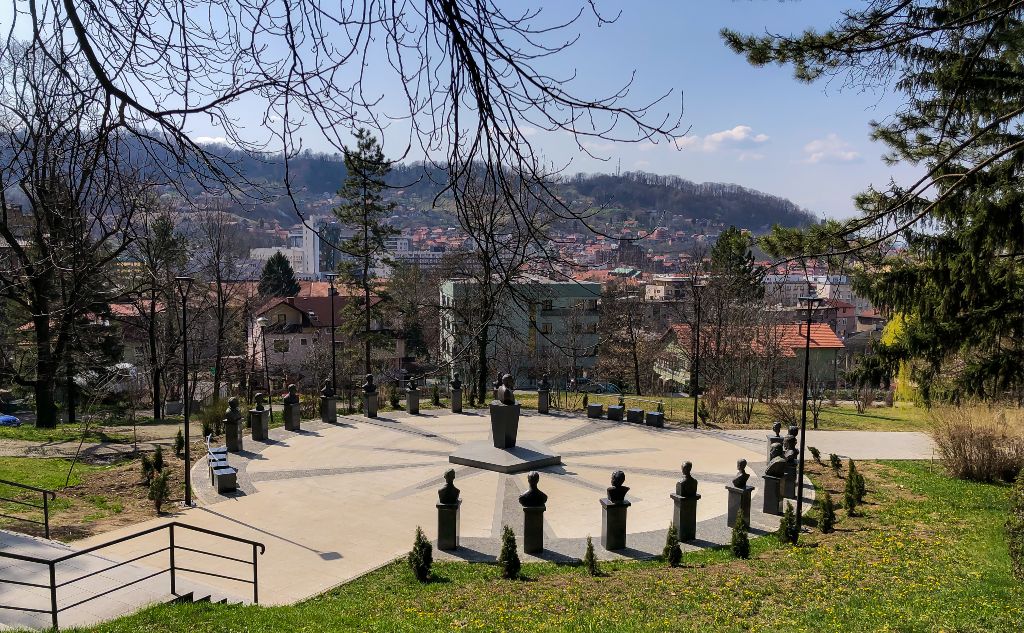
On May 25th, 1995, 71 people were killed and 200 people were injured during the Tuzla massacre. Over 100,000 people died during the brutal war.
And while it’s been almost 30 years since the end of the Balkans War, you can still see some of its scars while visiting the old town of Tuzla, and a memorial marks the site of the May 25 massacre.

During the war, Tuzla managed to remain one of the most multicultural cities in the country with Bosniaks, Serbs, Croats, and Bosnian Jews all living together.
Dotted between the mosques you’ll see as you walk around the city are Catholic churches and monasteries, like the Saints Peter and Paul Franciscan Monastery and a Serbian Orthodox Cathedral.
After the Bosnian war, the salt lakes of Tuzla became a tourist destination and it remains an off-the-beaten-track destination.
Highlights of Tuzla, Bosnia
Before you head out into beautiful northeastern Bosnia, check out the best sights in Tuzla:
Eastern Bosnia Museum – housed in what can only be called a decrepit building, is a surprisingly light museum that began in 1947.
The museum houses objects found in the region over the last 7000 years. Don’t let the very sad exterior put you off.
The Museum of Salt will, as its name suggests, explain the history of salt extraction and trade in Tuzla.
Dzinic Mosque (Huseina Causa)- this curious mosque doesn’t immediately appear to be a religious building at all.
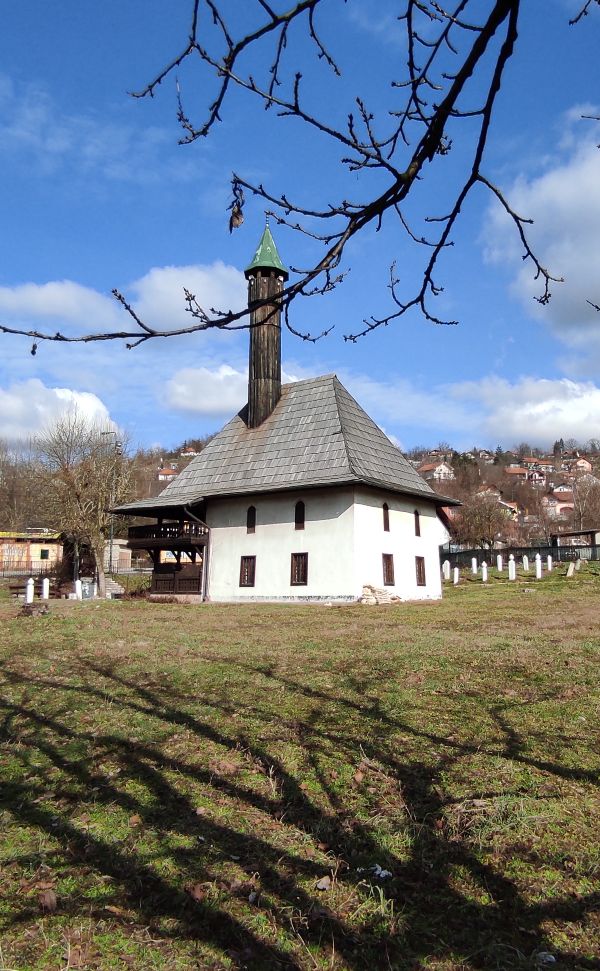
Instead, it looks like someone’s home with its whitewashed walls and shingle roof, but it’s
Turalibeg’s Mosque – In contrast with the very cute Dzindic mosque, Turalibeg’s mosque has both a pyramid-shaped roof, a stone minaret, and a vaulted dome.
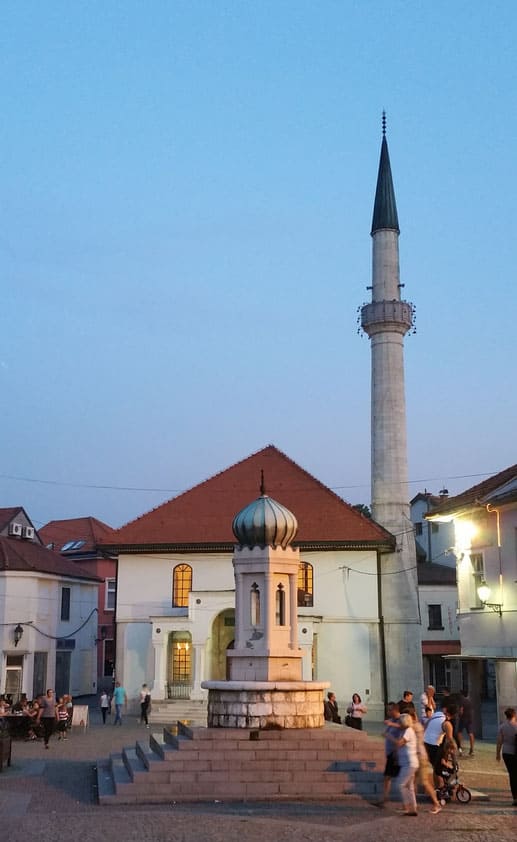
The site is known as the “Polish Mosque” and was built in the 16th century. The roof and the stone minaret make it unique across the Islamic world!
Unfortunately, like many buildings in the City of Salt, it began to subside and collapse and needed to be reconstructed from 2007-2014.
Walk the sinking stone streets – the word “Tuzla” comes from the word ‘salt.’ “Tuz” is ‘salt in Turkish and the first written record of Tuzla’s existence is as the town of “salines” and then “Soli.”
So it’s pretty clear that it’s the salt deposits from the salty lakes of Tuzla that drove the growth of this region.

Over hundreds of years, the extraction and removal of the salt deposits have affected the stability of the sub-structure, with sinkholes, potholes, and subsidence of parts of the city causing buildings to have collapsed.
Coffee in historic and cute little cafés – a pleasure throughout Bosnia and Herzegovina and in the Old Town.
Drinking coffee is a real institution in Bosnia: taking a coffee can sometimes last an hour, even if the traditional mugs are not bigger than an eggcup.

Tuzla Archaeological Park and its Neolithic lake homes – these replica Neolithic dwellings are part of an archaeological park and whilst they’re not ‘real’, the nine huts are definitely worth seeing because these are the types of homes Tuzla residents made thousands of years ago.
I loved learning that there have been Neolithic salt dishes found in Tuzla, for drying out the salt water to leave the salt behind.
National Theatre – Catch a show during theater season at Tuzla’s premier cultural centre, the National Theatre. The season runs from September until July.
Day Trips from Tuzla, Bosnia
1. Srebrenik and Medieval Castle
Srebrenik is a little town located in the north of Tuzla. It’s about a 30 min drive away.
It’s a scenic little town where you can witness remains of the Ottoman and Austro-Hungarian rule. The castle is a must on any Balkan Tour.

While the city center might not be too interesting, its prominent highlight can be found a 20-minute drive away from the city center of Srebrenik: the majestic and dramatic Srebrenik Fortress (Stari Grad municipality.)
Bosnia’s best-preserved medieval castle dates back to 1333 and was occupied by the first king of Bosnia and has been abandoned since 1378.
The fortress is located on an isolated rock which made it well-fortified in the past. Today, visitors can access the castle by a bridge.

The setting is dramatic with breathtaking views over the countryside. And honestly, it looked like straight from a Game of Thrones episode!
When approaching the castle, make sure to stop from time to time in order to appreciate the beautiful views of the castle itself.
The entrance fee is a tiny 2km (1€) and is entirely worth it for the panoramic views of the mountain landscape.
There is no transport connection to the castle and I recommend renting a car.
Check here for the cheapest car rental deals.
2. Gradačac
The beautiful town of Gradačac is about 30 30-minute drive from Srebrenik. Also here, a majestic castle is the most eye-catching sight of this little town: Gradačac Castle.
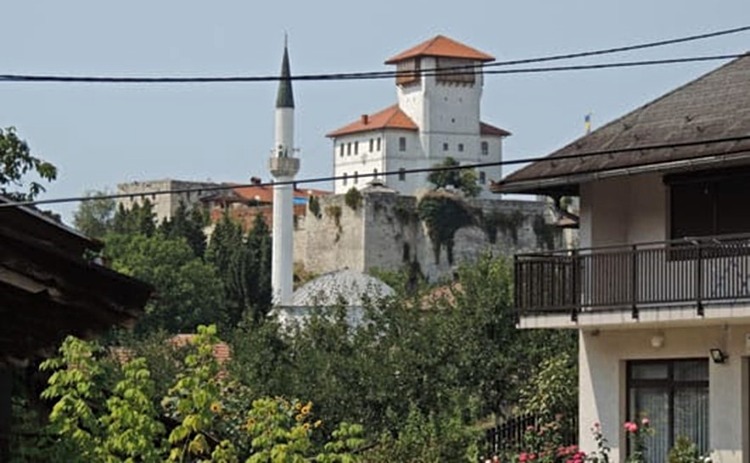
The castle is surrounded by an 18m high fort built between 1765 and 1821, but its prominent white tower is the most eye-catching attraction.
The town and the castle have a major importance for Bosnian history as the general from Gradačac rallied the Bosnians against the Turkish occupation and drove the Ottomans out to Kosovo. That’s how he assured Bosnia’s sovereignty for the coming year.
With its white house front, wooden balconies, an impressive fortification wall, and a beautiful mosque right next to it, the Gradačac fortress is an extremely popular motive for painters and photographers alike.
The castle is impeccably maintained and hosts a museum, a healthy, local snack bar with fresh juices, and a small souvenir shop. The bar also serves coffee in the traditional Bosnian way.
The souvenir shop of the fortress is one of the few pretty souvenir shops that I saw during my stay in Tuzla.
When you walk down the little paved way to the main city square, you’ll end up in front of the grave of warrior Husein Kapetan Gradascevic who was ruling during Ottoman times and bargained for more autonomy, self-rule, and land rights.
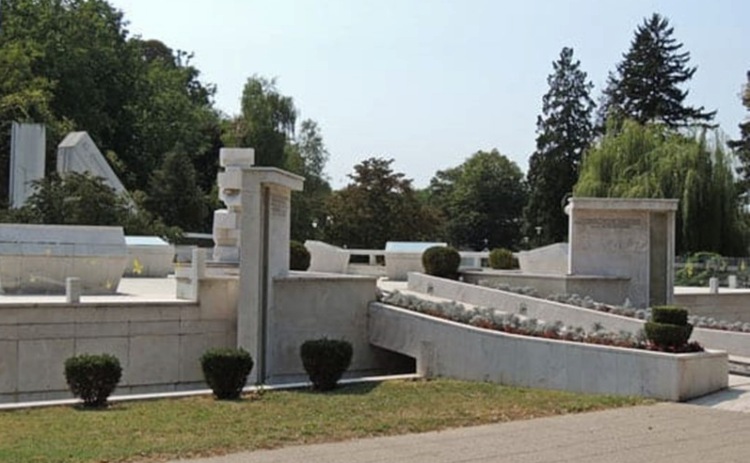
It’s well worth having a short walk through the little town, although it’s mostly motivated by getting the best shot of the mosque and fortress together.
In case you’re (still) not saturated with historic monuments, then head to the brutalist-style memorial to the Fallen Soldiers of World War II, which is known as Spomenik Poginulim Borcima and is right below the fortress.
3. Kop and Modrac Lakes
Kop Lake is a popular destination for weekenders and fishermen.
People from Tuzla and its surroundings love to hang out here with friends and family listening to nostalgic Balkan music and preparing delicious barbecues.
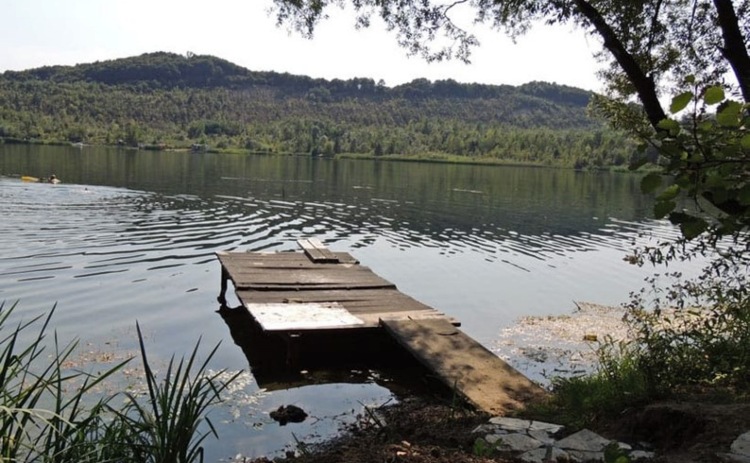
Unfortunately, you can’t swim in it, but therefore you’ll have some scenic vistas of the Bosnian landscape.
Another coveted weekend trip destination is Modrac Lake. This artificial lake is located close to the municipality of Lukavac and is a hotspot for fishermen.
For a long time, Modrac Lake was used as a garbage deposit. It’s not a place for swimming, but the natural surroundings are beautiful and worth visiting.
Final thoughts
I hope some of these highlights of Tuzla and its surroundings will convince you to consider including beautiful Bosnia and Herzegovina in your travel plans, especially if you are visiting Croatia and beautiful Dubrovnik. You can keep reading about Croatia and extend your trip.
Keep Planning Your Trip to Croatia
- There are so many things to do in Croatia. See all of the best things to do in Croatia from Get Your Guide
- Travel to Croatia: 7 tips for your first trip
- Stari Grad Croatia
- Dubrovnik Old Town
- Best Dubrovnik Museums
- Red History Museum Dubrovnik: Self-Guided Tour
- Read more Croatia articles.
